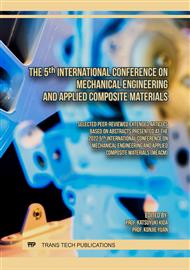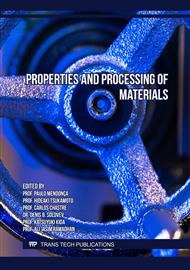p.85
p.91
p.97
p.105
p.111
p.117
p.125
p.131
p.139
Influence of Groove Roughness on Crack Initiation of PEEK Thrust Bearing in Water
Abstract:
In order to research the relation between fracture and texture conditions of PEEK thrust bearing in water, the rolling contact fatigue, RCF test was carried out. And then, the specimen after test was observed with a laser confocal microscope. Three types of surface damage: single crack, flaking and multiple crack: were ob-served. Arithmetic Average Roughness Height, AARH’s around single crack and no-damaged area were calculated. AARH’s in these two areas have no sig-nificantly different each other. This means the effect of cracks on roughness was negligible, and vice versa. The changing of AARH during the test was also dis-cussed. AARH’s both of failure and non-failure specimens were decreased dur-ing RCF tests. AARH Range of non-failure specimens after test included that of the failure specimen. It indicated AARH was not dominated the condition failure of PEEK bearing in water. On the other hands, the load had a clear threshold. This means the failure of PEEK bearing in water is strongly affected by load.
Info:
Periodical:
Pages:
111-115
Citation:
Online since:
April 2023
Authors:
Price:
Сopyright:
© 2023 Trans Tech Publications Ltd. All Rights Reserved
Share:
Citation:



